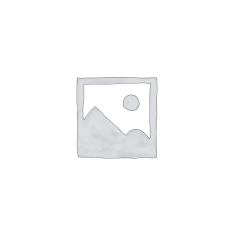Description
The implementation and use of surveillance (Closed Circuit Television technology) in societies across the globe has become a standard and reliable way of securing out environment. Smart surveillance CCTV camera network platform that can be used in a variety of outdoor applications including surveillance of public spaces, habitat and environmental monitoring, wildfire prevention and detection, to name a few. This work aims to highlight the installation and operation of smart surveillance camera. The report will provide the reader with a variety of discussions, based on the objective throughout the world. It will further evaluates the concept of the rise of surveillance and security system.
TABLE OF CONTENTS
COVER PAGE
TITLE PAGE
APPROVAL PAGE
DEDICATION
ACKNOWELDGEMENT
ABSTRACT
CHAPTER ONE
- BACKGROUND OF STUDY
- STATEMENT OF THE PROBLEM
- SIGNIFICANCE OF STUDY
- RESEARCH OBJECTIVES
- SCOPE OF STUDY
- METHODOLOGY
CHAPTER TWO
LITERATURE REVIEW
- OVERVIEW OF WIRELESS CAMERA
- TYPES OF WIRELESS CAMERAS
- RELATED WORK
- EXISTING SYSTEM
- PROPOSED SYSTEM
- OVERVIEW OF SURVEILLANCE
- TYPES OF SURVEILLANCE
- THE ORIGINS OF CCTV
CHAPTER THREE
METHODOLOGY
- SYSTEM BLOCK DIAGRAM
- HARDWARE REQUIREMENT
- SOFTWARE REQUIREMENT
- SYSTEM OPERATION
- FLOW CHART
- HARDWARE DESCRIPTION
CHAPTER FOUR
4.1 IMPLEMENTATION AND RESULT
CHAPTER FIVE
- CONCLUSION
- RECOMMENDATION AND FUTURE ENHANCEMENT
- REFERENCES
Background of Study
In recent times, surveillance systems are gaining a lot of popularity. The government, various organizations, residential societies, etc., are using these systems to keep a check on various activities for safety and security purposes.
A CCTV camera is a device that is capable of capturing video (and sometimes audio) of a location. Although they are occasionally used for commercial purposes, CCTV cameras are mainly used for surveillance activities.
A CCTV camera is the need of the hour if someone is suspicious of unlawful activities in your home, workplace, or grocery store. A CCTV camera can capture more than naked eyes can ever spot. Known as a Still video camera, this tiny monitoring device can help you track crime, bringing you to live evidence.
The correct design and use of such systems is paramount to ensure a CCTV surveillance system meets the needs of the user, provides a tangible benefit and provides safety and security for the wider law-abiding public (Charest et al, 2015).
Video cameras are used to observe an area, connected to a recording device or IP Network and monitored in a Control Room. Video surveillance technologies are used for far more than their roots in crime detection, with video analytics solutions able to serve a variety of applications such as traffic and crowd control management (Charest et al, 2015).
Closed-circuit television (CCTV) surveillance systems have made tremendous technological progress in the last decade, not only in individual capabilities, but also in the ability to interface with other security technology.
There are three primary ways to use CCTV systems, industry experts say: as a deterrent, for forensic purposes and as an interdictive device.
Originally, CCTV surveillance systems were simply a deterrent. The notion that “Big Brother” was watching was often enough to keep people from misbehaving. Today, though, CCTV surveillance systems are common enough that they have lost their novelty, reducing effectiveness as a simple deterrent, especially for illegal entry or violent crime (Charles, 2017).
Evolving Uses of CCTV Surveillance Systems
As recording and storing technologies and software such as video analytics have became more efficient, CCTV surveillance systems have evolved into a forensic tool — that is, collecting evidence after an event has occurred (Fay et al, 2018).
But as CCTV surveillance systems become more easily integrated with monitoring devices, alarm systems and access control devices, a third use of CCTV is gaining momentum: Helping security personnel to identify and interrupt security breaches as they’re occurring, or even before they take place.
Intelligent video algorithms, such as sophisticated motion detection, can identify unusual walking patterns and alert a guard to watch a particular video screen. Object-recognition algorithms can identify someone who might simply be loitering, or even a briefcase or other suspicious object that is left somewhere it shouldn’t be. Again, the system can alert a monitoring guard so that appropriate action can be taken.
The most advanced intelligent video algorithm is facial recognition. However, most experts agree that use of this technology as an efficient tool in the private sector is still several years down the road (Bôle-Richard, 2007).
Traditionally, intelligent video algorithms are components of a computer system in a security room to which video captured by an array of CCTV cameras is fed. But on the horizon, manufacturers will be making cameras that can process the intelligent video algorithm right inside the camera.
Wide dynamic range is another technology that is becoming more prevalent on CCTV cameras. Wide dynamic range means cameras can resolve details when there’s a tremendous amount of both light and dark areas in the same scene (Bôle-Richard, 2007).
1.2 PROBLEM STATEMENT
Today we find that wireless CCTVs are installed at many places e.g. banks safes, jewelry shops etc. But the CCTV cameras continuously record the situations. Due to this, there is unnecessary memory wastage if there is nothing happening in front of the camera. Also the CCTV does not provide alerts of burglary happening at the particular time. So system is proposed which would record the situation only if there is some movement happening in front of the camera and sends the alerts to the manager as well as the police along with the user.
1.3. Research Aim and Objectives
The main aim of smart CCTV surveillance and security system is to wirelessly monitor your environment using your smartphone and an app.
The objectives of this study are:
- To help reduce the fear of crime.
- To help deter crime.
- To help detect crime and provide evidential material for court proceedings.
- To assist the Local Authority in its enforcement and regulatory functions within the environment.
- To study the working principle and installation of a smart cctv surveillance.
- To assist in the overall management of any organisation.
1.3 Significance of study
The primary use of a closed-circuit television camera is to provide a steady warning and deterring burglars, thieves and other criminals in homes and offices.
This study shall be a means of enlighten the reader the importance of using smart CCTV surveillance as means of promoting security in companies and homes.
Carrying out this study will be of great benefit to me in that it will expose me to known the advantages and the essence of using smart cctv camera in our companies and home.
To all electrical student and all readers of the research, this work will become an eye opener to them – it will help them to understand how to install a smart CCTV surveillance.
1.4. Scope of study
The scope of this work covers prevention, detection, and intervention which have led to the development of real and consistent video surveillance systems are capable of intelligent video processing competencies. A smart CCTV surveillance and security system connects to your Wi-Fi network so you can monitor environment using your smartphone and an app.
1.5. Methodology
The CCTV camera system at first only consists of security cameras and monitors. Afterwards, various recording units come out for video storage. A CCTV camera system, which is known as closed-circuit television camera system, is showed in the following diagram.
The most important aspect of installing a CCTV camera system is choosing the right spots for camera and DVR to maximize camera coverage and minimize cable length (which in-turn reduces the in line losses that affect video quality). For indoors, choose a corner in the room from where most entry points into the room are visible. A power socket should also be in close proximity. For outdoors, choose a higher spot covering the door, window approaches, garages etc. Choose the spots above 10ft so that it cannot be knocked down easily Bôle-Richard, 2007).
Mounting the camera
Place the camera unit at the desired place, make guide marks for drilling. Drill holes and hammer in the screw mouldings. Now, screw the camera in place firmly. Insert the power cable of the camera in a socket.
Placing the DVR
DVR of the CCTV is the place where the surveillance hard disk is present. Thus all your CCTV recording reside inside a DVR. It is highly recommended to keep the DVR inside a locked compartment so that even if an intruder spots the DVR, he/she can’t destroy the recorded videos. This is a vital step to ensure a bullet proof security system for your home.
Managing the wireless network
GSM modem is used to send the captured information wirelessly. A GSM modem or GSM module is a hardware device that uses GSM mobile telephone technology to provide a data link to a remote network. From the view of the mobile phone network, they are essentially identical to an ordinary mobile phone, including the need for a SIM to identify themselves to the network. GSM modems typically provide TTL-level serial interfaces to their host. They are usually used as part of an embedded system.
Power on the system
Start by powering ON the cameras followed by the display and the DVR. Setup the DVR according to the user manual provided with the DVR. Go over every camera’s feed to confirm each camera is working properly and providing the desired viewing angle.
CHAPTER FIVE
5.1 CONCLUSION
We have designed a system which can track an object in surveillance video. The main purpose of this system is to minimize the wastage of memory and provide advance security with generation of OTP and GSM technology to send SMS. The performance of the proposed method is found to be better as it enables the user to take immediate action to stop the crime while it is in progress. The registered user can alert police authorities if required.
5.2 RECOMMENDATION AND FUTURE ENHANCEMENT
The future upgrade to this work should be possible by including some more viewpoints, for example, face acknowledgment. Along these lines it improved the dependability of bank locker and unapproved access will be limited. The upgrade could be additionally connected to recognize the unlawful passage.

